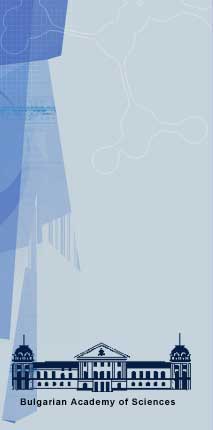|
Department of Molecular Design and Biochemical Pharmacology
Research activity
The research activity of the Department of Molecular Design
and Biochemical Pharmacology includes the following topics:
1) Synthesis, screening and mode of action of analogs of
precursors of pyrimidine and purine nucleotides, analogs of
protein and non-protein amino acids, modified neuroactive
peptides; 2) Investigation on natural and synthetic
inhibitors of UDP-glucuronosyltransferases (UGTs); 3)
Synthesis and mechanism of action of new platinum complexes;
4) Molecular mechanism of action and appoptogenic effect of
compounds with antitumor activity; 5) Antitumor effect and
biochemical mechanisms of action of HSP90 molecular chaperon
inhibitors; 6) Microbial diversity and activity in polluted
environments. The research groups, engaged in these studies,
are in close collaboration with each other.
The development of conformationally restricted unnatural
amino acids and dipeptidemimetics is of major interest for
the preparation of novel molecular architectures. We were
interested in the design, synthesis and study of novel
unnatural amino acids with more positively charges and bulky
side chain groups than those of lysine, leucine and arginine.
The unusual amino acids, which were synthesized by either
solution or solid phase, were controled for enantiometric
purity by HPLC, capillary electrophoresis (CE) and capillary
electrochromatography (CEC).
UGTs catalyse the glucuronidation reaction, a major
detoxification pathway in all vertebrates. We found that
some widely used pesticides, as well as toxic compounds
present in the human diet or used as drugs, significantly
inhibit UGTs in vitro. Development of selective UGT
inhibitors greatly enables the study of various UGTs and
their function in vivo. We have synthesized and tested a
series of 5’-O-amino and oligopeptide derivatives of uridine.
The serine derivative proved to be a potent inhibitor of rat
liver UGT and acted as a transition-state analog of the
conjugation reaction.
Cis-diamminedichloroplatinum(II) (Cisplatin, DDP) is a
widely used antitumor agent. The development of acquired
resistance to DDP and the severe toxicity of these drug
encouraged the search for new active platinum compounds
exhibiting low toxicity. For the synthesis of new complexes,
different types of nitrogen donor ligands, like
cycloalkanecarboxylic acid hydrazides,
3-aminocycloalkanespiro-5-hydantoins as well as different
benzoic acid hydrazides have been used.
The study of the molecular mechanisms of apoptosis in tumor
cells upon treatment with clinically used, as well as with
newly synthesized by us agents with antutumor activity,
demonstrated a correlation between the ability of to induce
apoptosis in vitro and their antitumor effect in vivo. In
this connection, we intend to test the hypothesis that
clinically important combined treatment of tumors with
different agents induces synergistic activation of apoptotic
mechanisms in cancer cells.
The inhibitors of HSP90 molecular chaperones emerged in
recent years as a novel, unique class of antitumor agents
with a specific profile and great potential. Because of the
chemoprotective activity of several oncogenic proteins that
are HSP90 clients, the combination of HSP90 inhibitors with
standard chemotherapeutic agents could dramatically increase
the in vivo efficacy of the therapy. The mechanism of action
of these combinations will be studied on tumors having
different expression profiles of oncogenic proteins. This
may be of crucial importance for the choice of treatment
strategy, especially against tumors resistant towards other
cytostatics.
The microbial diversity and activity in environments
polluted with heavy metals, and radionuclides is of great
interest. Modern methods of molecular microbiology were
applied to analyze the bacterial diversity of a Pb-Zn
smelter works in south Bulgaria and several uranium mining
wasters in East Germany, and the USA. In progress is the
study on the microbial diversity in Bulgarian uranium wastes
and oil contaminated sites. Many indigenous bacteria
possessing Cu-, Cd-, Mn-, Pb-, Zn- and herbicides-tolerance
were isolated. Such natiral isolates as Bacillus subtilis
RG5 and Pseudomonas rhodesiae R5 are capable for
biotransformation of Pb and phenol derivatives. They could
be prospective for using in the bioremediation projects of
industrially polluted environments.
International collaborations: University of Halle, Germany;
University of Greifswald, Germany; Forschungszentrum
Rossendorf, Germany; University of Graz, Austria; Czech
Academy of Sciences; German Wool Institute, Technische
Hochschule, Aachen, Germany.
|




